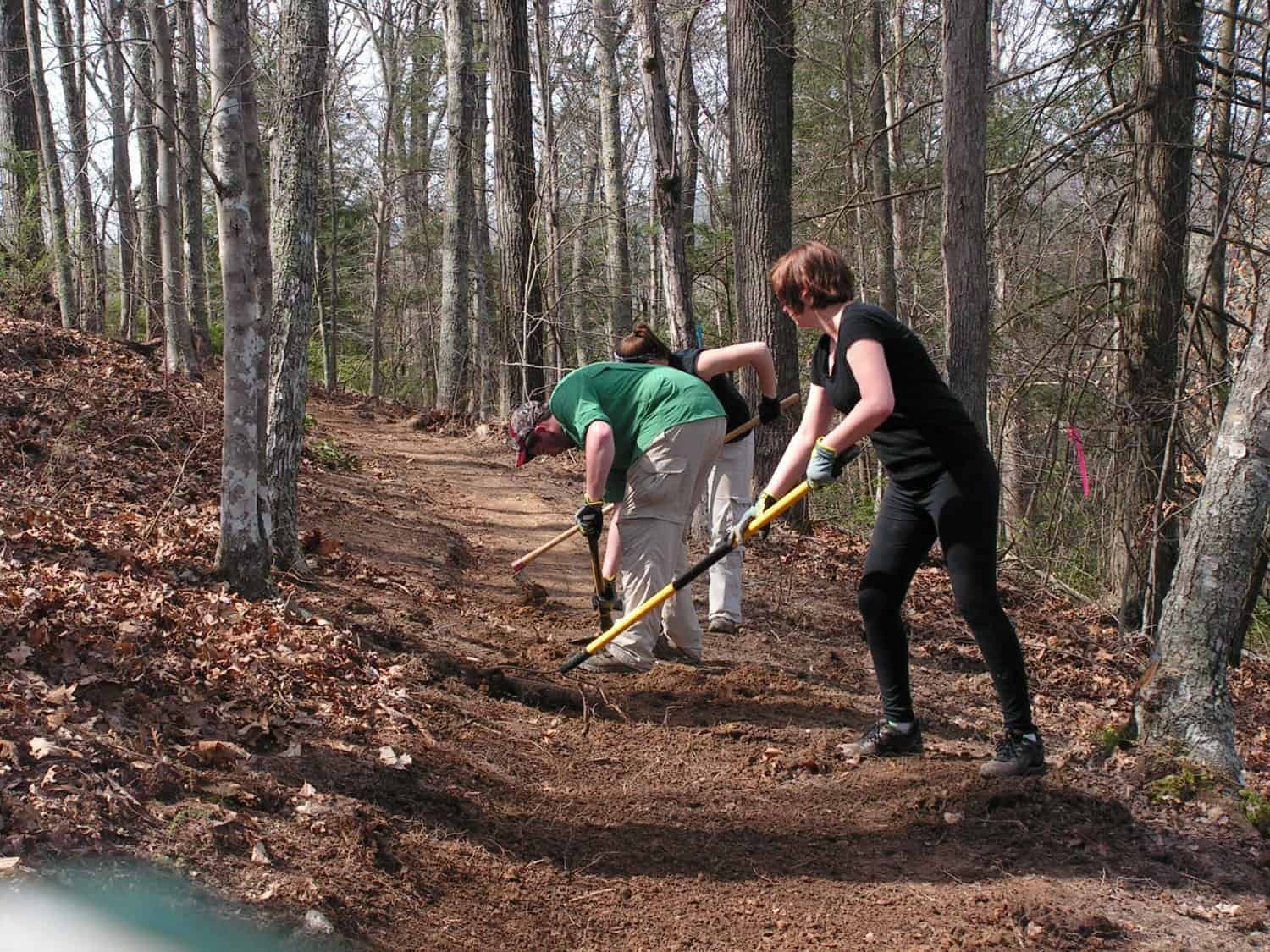Day-in-the-Life of an Alternative Breaker
Until she helped lug a truckload of 4-by-8s down a disused riding trail, Jenni Herrick never realized just how far 0.2 miles can be.
 Herrick, GWC’s assistant dean of students and director of the Office of Student Success, recently accompanied a group of six students on a weeklong alternative spring break to Virginia’s James River State Park (JRSP). There, she and the students helped build a new (wooden) stairway to a dramatic, previously inaccessible river overlook and renovated the long-overgrown — and deceptively short — equestrian path that leads to it.
Herrick, GWC’s assistant dean of students and director of the Office of Student Success, recently accompanied a group of six students on a weeklong alternative spring break to Virginia’s James River State Park (JRSP). There, she and the students helped build a new (wooden) stairway to a dramatic, previously inaccessible river overlook and renovated the long-overgrown — and deceptively short — equestrian path that leads to it.
Even with temperatures in the mid-’70s, clear skies and no mosquitoes, the job was anything but a walk in the park.
“We did a lot of raking, dug up a lot of tree stumps, and we were sore every night,” said sophomore psychology major Samantha Olson. “But the park rangers we worked with were very nice. They understood that we were inexperienced, so they knew just how long they could push us.”
GWC has offered alternative spring break service opportunities for three years, according to Herrick. This year, she and professor Chris Wells, chair of the Department of Parks and Recreation Leadership, teamed up with the nonprofit American Hiking Society, to place six students at JRSP.
“We had students from several majors participate,” Wells said. “The experience was such that each student was able draw parallels to what they had learned in their particular disciplines.
 “The ability to apply classroom learning in the field strongly reinforces classroom learning,” Wells said. “Trips like this are excellent opportunities for students to network with professionals and can lead to internships and potentially to jobs.”
“The ability to apply classroom learning in the field strongly reinforces classroom learning,” Wells said. “Trips like this are excellent opportunities for students to network with professionals and can lead to internships and potentially to jobs.”
But there are other reasons, too.
“It offers a great way to give back and a chance to dip your toes into a sea of opportunities,” Olson said. And besides, she added, it was her first time east of Indiana.
The week was not all work and no play, though. The 15-year-old, six-bedroom, three-bathroom cabin where they stayed featured a fully equipped kitchen, living room and front and back porches — not to mention the fire pit.
During their single day off, the students observed a prescribed burn, which, according to the rangers, serves to encourage new growth for foraging wildlife. They also hiked to see Crabtree Falls — at 1,200 feet, the highest vertical-drop cascading waterfall in the eastern United States — and one evening they accompanied naturalists in an “owl hike” through the park.
For more information about American Hiking Society’s Alternative Break program, visit HERE.
